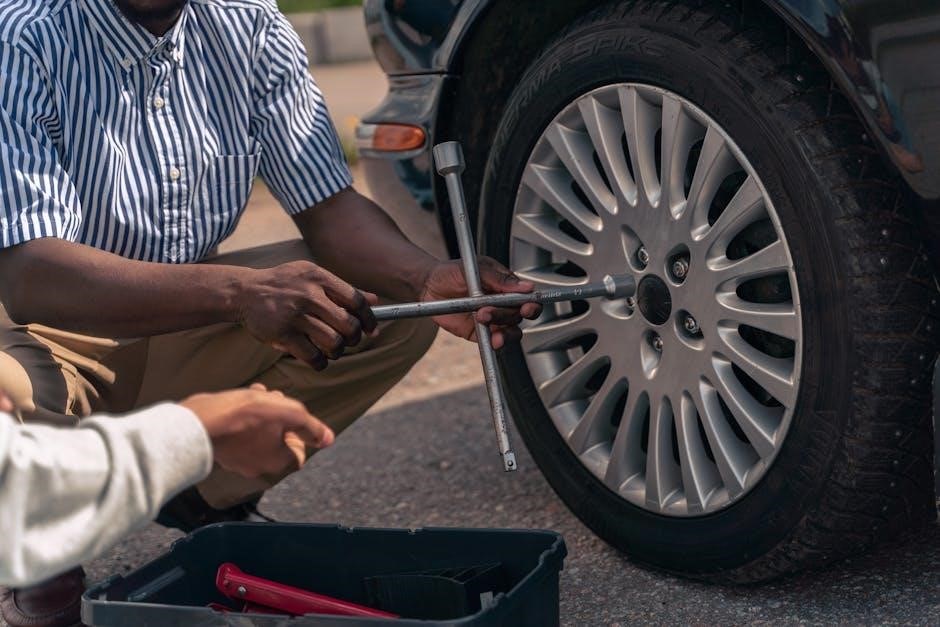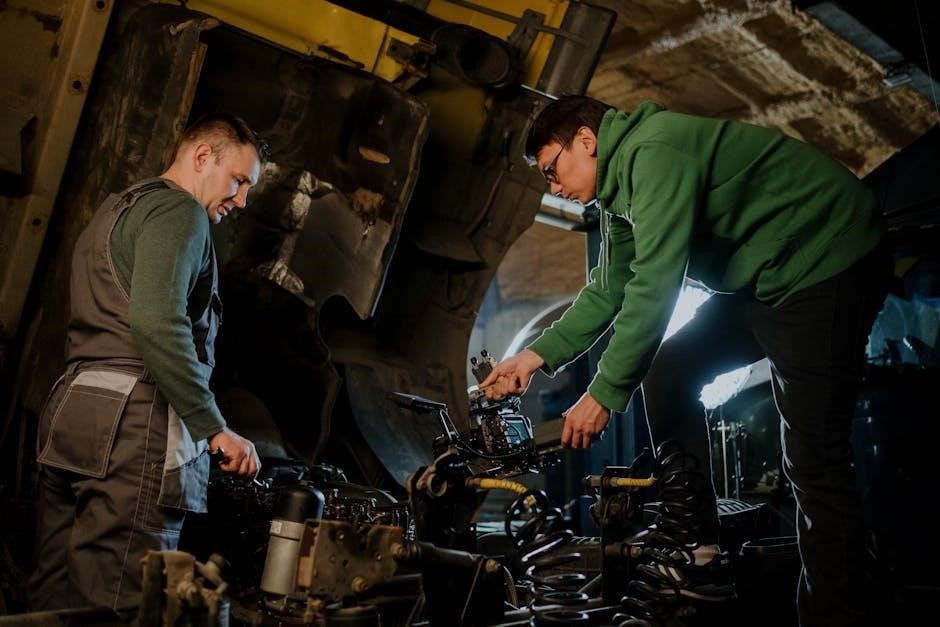Mastering manual transmission offers better control, fuel efficiency, and driving enjoyment. Starting with a forgiving car, like the Honda Civic or Mazda MX-5, ensures a smooth learning curve for beginners.
Why Learning to Drive Manual is Important
Learning to drive a manual transmission is a valuable skill that enhances control over the vehicle, improves fuel efficiency, and provides a more engaging driving experience. It allows drivers to connect more deeply with the car, making every journey more enjoyable. Additionally, manual vehicles are often less expensive to purchase and maintain compared to automatics. They also tend to have better resale value. Furthermore, knowing how to drive a stick shift can be a practical advantage in certain situations, such as renting cars abroad or driving classic vehicles. It also reduces the risk of car theft, as not everyone knows how to operate a manual transmission. Mastering this skill can boost confidence and open up more driving opportunities.
Key Characteristics of a Good Car for Learning Manual

A good car for learning manual transmission should have a smooth, forgiving clutch and an easy-to-use gearbox. Visibility and compact size are beneficial, allowing learners to maneuver confidently. The car should also have a predictable acceleration response, helping beginners avoid stalling. Light weight and low horsepower are advantageous, as they reduce the risk of losing control. Additionally, a quiet and comfortable interior can minimize distractions during practice. Fuel efficiency and affordability are practical considerations, making the learning process less stressful. Lastly, reliability is crucial, as frequent mechanical issues can disrupt the learning process. These traits ensure a positive and effective experience for mastering manual driving.

Top Cars for Learning Manual Transmission
The best cars for learning manual transmission include the Honda Civic, Mazda MX-5, Toyota Corolla, Ford Focus, and Hyundai Excel, each offering smooth clutch engagement, forgiving gearboxes, and responsive handling, ideal for new drivers.
Honda Civic: Smooth Clutch and Forgiving Gearbox
The Honda Civic stands out as an excellent choice for learning manual transmission. Its smooth clutch pedal and forgiving gearbox make it easy for beginners to master shifting. With good visibility and a comfortable interior, the Civic provides a stress-free environment for practice. The car’s balanced design ensures that even slight mistakes, like riding the clutch or stalling, don’t lead to frustration. Additionally, its fuel efficiency and reliability make it a practical option for new drivers. Many learners praise the Civic for its predictable behavior, which builds confidence and skill behind the wheel.
Mazda MX-5 Miata: Perfect Shifter and Clutch Balance
The Mazda MX-5 Miata is a top choice for learning manual transmission due to its exceptional shifter and clutch balance. Its short-throw shifter and smooth clutch make shifting gears intuitive and precise, allowing learners to focus on mastering the technique without struggling with stiff or vague controls. The Miata’s rear-wheel-drive layout and lightweight design provide excellent feedback, helping new drivers understand how the car responds to their inputs. While its sporty nature might suggest otherwise, the Miata is surprisingly forgiving, making it an excellent platform for practicing clutch control and gear changes. Many enthusiasts recommend it for its joyful driving experience and ease of use, making it a standout option for beginners.
Toyota Corolla: Reliability and Ease of Use
The Toyota Corolla stands out as an excellent choice for learning manual transmission, offering unmatched reliability and simplicity. Its smooth, predictable clutch and precise gearbox make it easy for beginners to grasp the fundamentals of shifting gears. The Corolla’s compact size and lightweight design provide excellent visibility and maneuverability, reducing stress while practicing in traffic or tight spaces. With a reputation for durability, the Corolla minimizes concerns about wear and tear from frequent stops and starts. Its fuel efficiency and low maintenance costs add to its appeal, making it a practical and stress-free option for those mastering the art of driving a manual car.
Ford Focus: Affordable and Responsive
The Ford Focus is an excellent and budget-friendly option for learning manual transmission. Its smooth, forgiving clutch and responsive shifter make it ideal for beginners. The compact size and lightweight design provide excellent maneuverability and visibility, reducing stress while practicing. The Focus’s affordability and low maintenance costs make it a practical choice for new drivers. Its smooth clutch and precise gearbox allow learners to master shifting gears without frustration. The Ford Focus strikes a perfect balance between affordability, ease of use, and responsiveness, making it a top pick for those looking to learn manual transmission without breaking the bank.
Hyundai Excel: Simple and Easy to Handle
The Hyundai Excel is a straightforward and user-friendly car for mastering manual transmission. Known for its simplicity, the Excel features a light clutch and an easy-to-navigate gearbox, making it perfect for new drivers. Its compact design ensures excellent visibility and maneuverability, reducing anxiety while learning. The car’s forgiving nature allows learners to practice shifting gears and controlling the clutch without the pressure of a more complex vehicle. Additionally, the Excel’s affordability and low maintenance costs make it an ideal choice for those seeking a reliable car for learning. Its no-frills approach and smooth handling create a stress-free environment for beginners to build confidence in their driving skills.

Transmission Types and Their Suitability for Beginners
Standard manual transmissions are ideal for beginners, offering full control. Automated manuals provide a good compromise, while dual-clutch transmissions are less suitable for new drivers.
Standard Manual Transmission: The Best for Learning

Standard manual transmissions are the most recommended for beginners due to their simplicity and direct driver control. They require coordination between the clutch pedal and accelerator, teaching essential shifting techniques. Cars like the Honda Civic and Mazda MX-5 feature smooth, forgiving clutches, making them ideal for practice. The clear feedback from the gearbox helps learners understand gear engagement and timing. Practicing in empty parking lots or quiet streets allows beginners to master clutch control without pressure. Standard manuals build muscle memory and patience, essential for confident driving. They are the best way to learn the fundamentals of manual driving before progressing to more complex systems.
Automated Manual Transmission (AMT): A Good Compromise
Automated Manual Transmission (AMT) offers a middle ground for learners who want to master manual driving without the complexity of a traditional clutch. AMT cars, such as the Ford Focus or Hyundai Excel, eliminate the need for manual clutch operation, simplifying the learning process. This system automatically engages and disengages the clutch, reducing the risk of stalling. While it lacks the smoothness of dual-clutch transmissions, AMT is more fuel-efficient and cost-effective. It’s an excellent option for beginners who want to familiarize themselves with gear shifting without the added pressure of clutch control. AMT strikes a balance between ease of use and the traditional manual driving experience.
Dual-Clutch Transmission: Not Ideal for Beginners
Dual-clutch transmissions (DCT) are highly advanced systems designed for performance, offering quick gear changes and smooth acceleration. However, their complexity and sensitivity make them unsuitable for beginners learning manual transmission. DCTs often lack the forgiveness of traditional manuals, requiring precise timing and control. Cars equipped with DCTs can jerk or stall if not handled correctly, which can be discouraging for new drivers. Additionally, the lack of a clutch pedal in some models confuses learners who are trying to understand the basics of manual shifting. For those just starting out, a standard manual or even an Automated Manual Transmission (AMT) is a better choice, as they provide a more forgiving and straightforward learning experience.

Additional Tips for Learning Manual
- Start in a flat, open space to practice clutch control and shifting without obstacles.
- Use the clutch smoothly to avoid jerky movements and potential damage.
- Practice in first and second gears before progressing to higher speeds.
- Focus on feeling the “biting point” of the clutch for seamless shifts.
Choosing the Right Practice Environment
When learning to drive a manual transmission, selecting the right practice environment is crucial. Start in a flat, open space like an empty parking lot or a quiet street with minimal traffic. Avoid inclines or declines, as they can complicate the learning process. Grassy fields or large empty lots provide a safe space to stall without worrying about traffic or obstacles; Once comfortable with basic clutch and gear control, gradually move to lightly trafficked roads or county roads. Avoid urban areas or busy streets until confidence and skill levels improve. A patient and stress-free environment is key to mastering manual transmission effectively.
How to Practice Without Damaging the Car
Practicing manual transmission requires care to avoid damaging the car. Start by familiarizing yourself with the clutch and accelerator pedals, ensuring smooth transitions. Avoid riding the clutch, as this can wear it down prematurely. Shift gears at appropriate RPMs to prevent strain on the transmission. In stop-and-go situations, use the handbrake on inclines to reduce clutch wear. Keep practice sessions short to avoid overheating the engine or transmission. If the car stalls, don’t panic—engage the clutch fully and restart. Regularly check for any unusual noises or vibrations that may indicate improper shifting. By following these guidelines, you can protect your vehicle while mastering manual driving skills.
Using Accessories to Aid the Learning Process
Various accessories can enhance the learning experience for manual transmission drivers. Adjustable clutch pedals provide better control, while non-slip pedal covers improve feel and consistency. LED shift lights or tachometers help learners understand optimal RPM for smooth gear changes. Driving apps offer real-time feedback on shifting and clutch usage, aiding in developing muscle memory. Additionally, clamp-on mirrors or dash cams improve visibility, reducing distractions while practicing. These tools simplify the process, making it easier to focus on mastering clutch control and gear coordination. By incorporating such accessories, learners can minimize errors and build confidence behind the wheel faster and more effectively.
Learning manual transmission with the right car enhances driving skills and confidence. Choose a forgiving vehicle like the Honda Civic or Mazda MX-5 for a seamless experience.
Final Thoughts on Selecting the Best Car for Learning Manual
Selecting the right car for learning manual transmission is crucial for a smooth experience. Cars like the Honda Civic, Mazda MX-5, and Toyota Corolla are highly recommended due to their smooth clutches and forgiving gearboxes. These vehicles provide excellent visibility and are easy to handle, making them ideal for beginners. Additionally, considering factors like fuel efficiency and reliability ensures long-term satisfaction. Whether you prioritize affordability or performance, there’s a car on the market tailored to your needs. Investing time in choosing the perfect model will make the learning process enjoyable and effective, setting you up for mastering manual driving with confidence.
Encouragement and Next Steps for Beginners
Learning to drive a manual transmission is a skill that improves with practice and patience. Celebrate small victories, like mastering smooth starts or flawless gear shifts. Begin in a safe, open space, such as an empty parking lot, to build confidence. Gradually progress to more challenging environments, like quiet neighborhood streets, before tackling busy roads. Remember, stalling is part of the process—it’s how you learn. Consistency is key; dedicate time each week to practice. Once comfortable, explore the joy of driving on winding roads or highways. The sense of control and connection to the car is rewarding. Keep pushing forward, and soon you’ll be shifting like a pro!